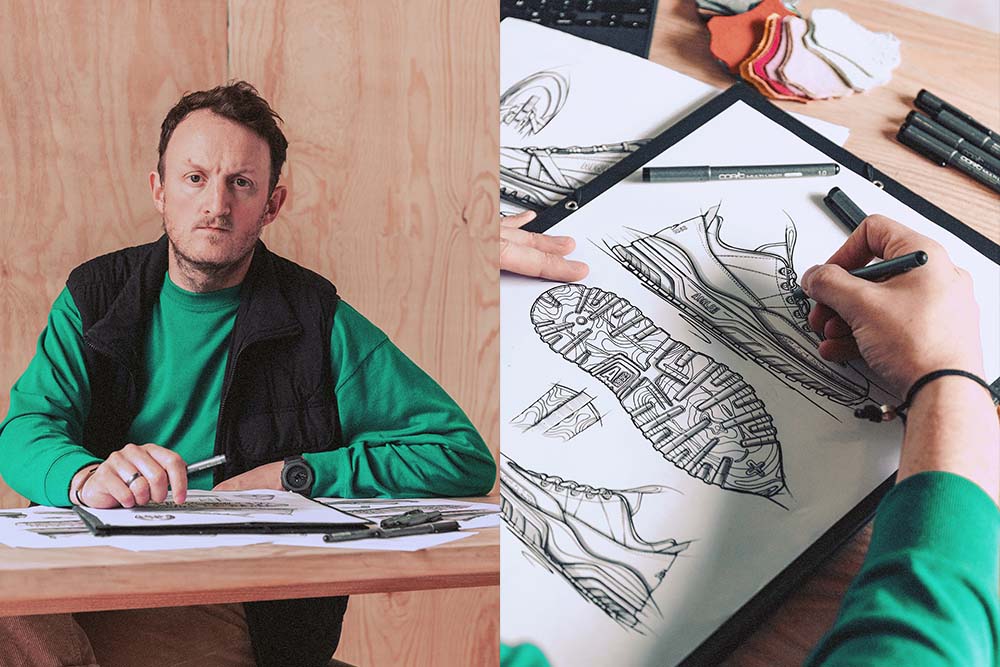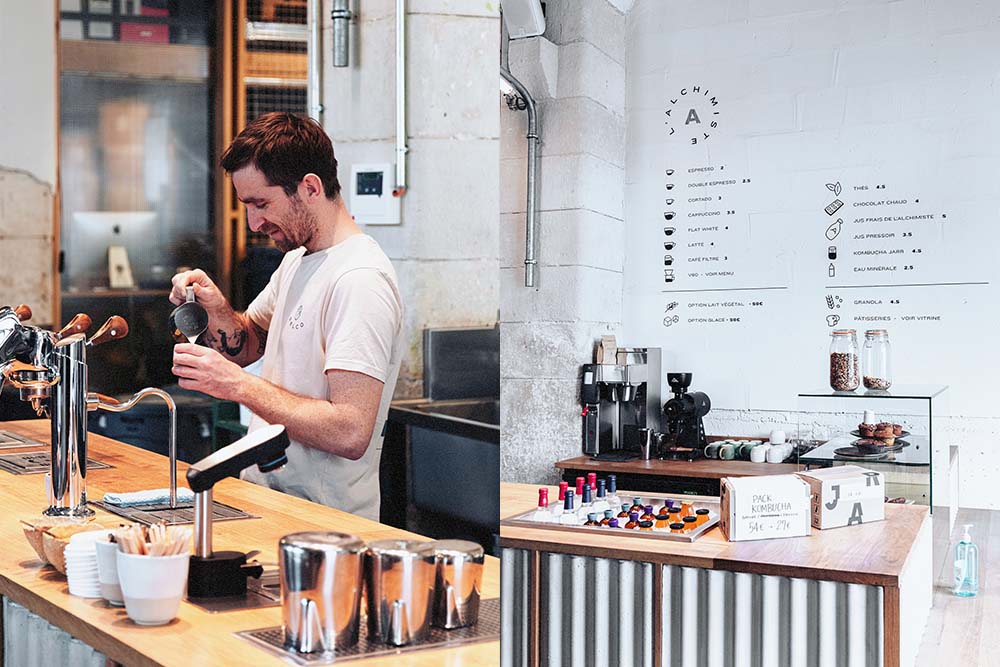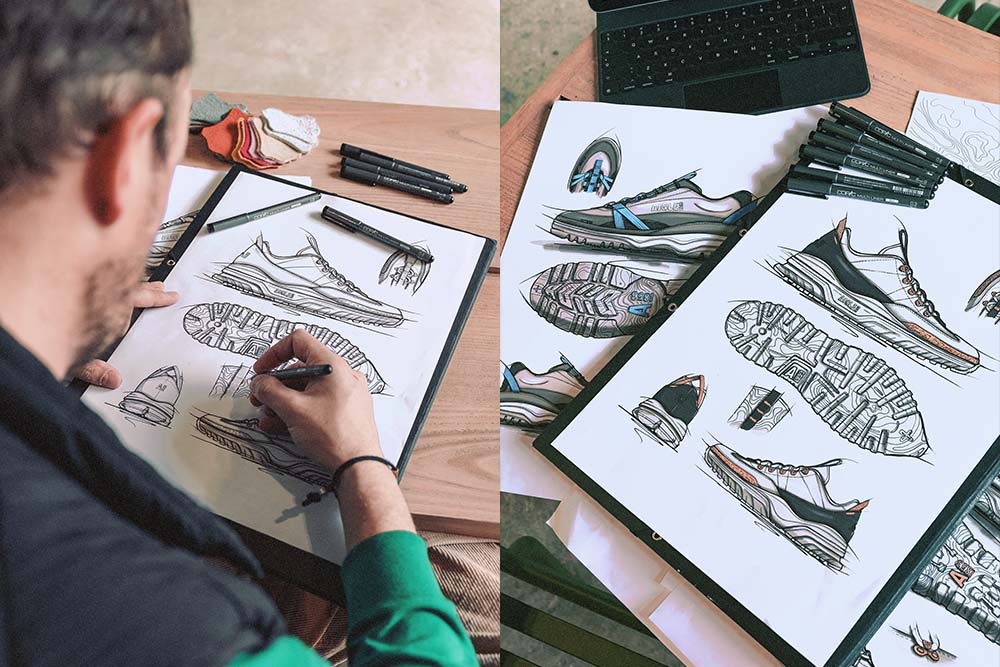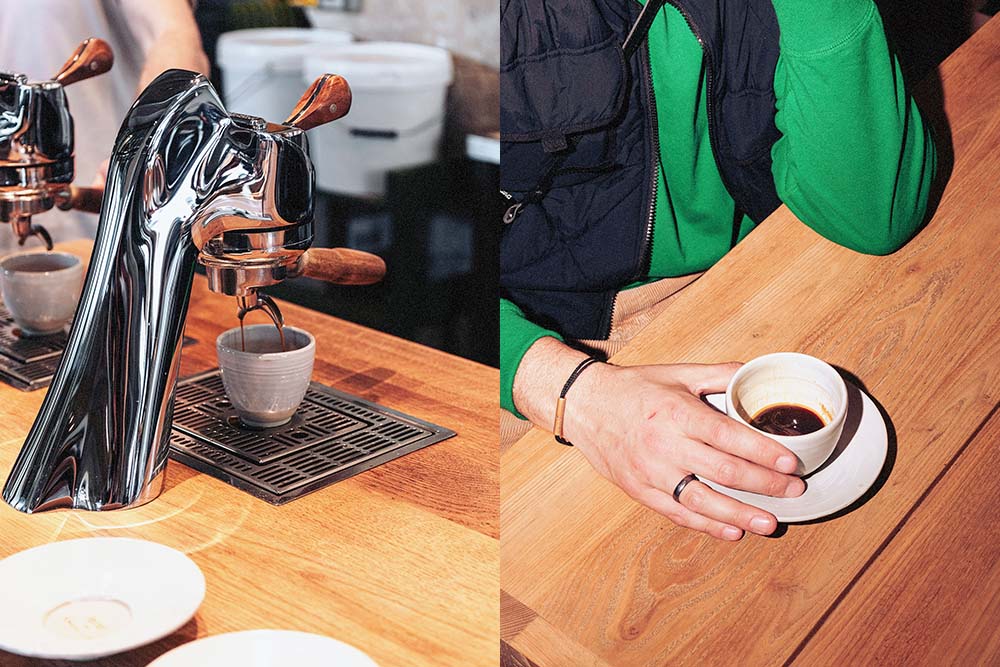
Monsieur Germain, Performance Footwear Consultant | Footpatrol Meets
FP Meets is our opportunity at Footpatrol to learn and share this with our community. We delve into the minds of some of people who have been part of some of our favourite brands. From designers, photographers to brand founders and marketing teams, we love to learn more about processes and product.
This week, our Footpatrol Paris team travelled to Marseille to visit creative designer and performance footwear consultant, Monsieur Germain.
Over 15 years of experience behind him, Germain has been part of some of our favourite brands including the likes of Mizuno and other well known brands like Veja. Within these roles, he’s been a part of the whole process including design, production, artistic direction and the product development.

Footpatrol: Hi Germain, we hope you are well? Firstly, thank you for letting us come and talk to you today. We’re interested to learn a lot about your career and current practices. Can you start by telling us a little bit about yourself and what it is that you do?
MG: Hi! I’m doing very well, thank you. My name is Germain Thomine and I am a Footwear designer who specialises in performance. I’ve now been in the shoe/sneaker industry for about 15 years.
I first started in Munich in an agency called Creation & Focus where I worked for Puma, Diadora, and a few more secret projects at the time at adidas for example.
Little by little, I fell in love with sneakers in general. My mom is a former fashion designer and I was quite interested in fashion as a kid. The relationship between the industrial product and fashion exists within the shoe. There’s this combo between the upper which is generally in textile, so very fashionable, and the sole which is more rigid and efficient so more related to product design. After 5 years at C&F, I was hired by Mizuno in 2015 to become Design Manager of their European offices in Munich. I spent almost 4 years there internally. I worked on different categories: running, handball, volleyball, football, etc.
In 2018, we had the idea with Lucas Marchet and Wesley Tyreman to launch a Lifestyle collection at Mizuno. We realised that with 110 years of history and the archives they had accumulated, it was a shame not to operate a Lifestyle range. So we developed this whole Mizuno Sportstyle range by creating a family story with the Kazoku. Kazoku means family in Japanese, and we created a whole ecosystem around this Lifestyle category with special partners like Footpatrol, for example.
After that, I went freelance because Mizuno was moving, and I couldn’t move out of Munich. I nevertheless offered to continue the adventure together and we decided to continue as freelance.
FP: Can you tell us more about your time spent in Munich at Creation & Focus Agency, and the sorts of projects you handled here?
MG: I oversaw Motorsport products and Kids for Puma. For Diadora I did Running and Cycling, so I was all about performance. I stayed within this agency for 5 years, but I was hired a little “by chance”. I have an industrial design background and they wanted to take me for a project with Puma which was to integrate a speaker on a shoe. I had just come back from a year of training in China where I was doing washing machines, coffee machines, etc. So, I had my background as an industrial designer and they contacted me specifically for this project. Turns out they didn’t have the budget to go through with it, but it was very interesting!
FP: Then we understand you moved forward into design footwear manager for Mizuno brand. Can you tell us more about similarities or the differences between Japanese design processes unlike previous German and Italian brands? Is it true you were also the first non-Japanese designer at Mizuno?
MG: About being the first non-Japanese at Mizuno as a designer, I think that’s true but I’m not sure about that haha. I was told I was the first European to work for the brand. But I know that Tuan Le, who is a legendary designer at Mizuno, was not Japanese but Vietnamese. In the teams, there were very few westerners, even after I joined the company. Adapting to work with the Japanese requires to be a lot more rigorous than in France for example. I already had this rigor thanks to the Creation & Focus agency, which was a German agency managed by Rudolf Hieblinger, an Austrian who is also pretty square in his approach, his development follow-up, etc. Let’s say that I already had a well-established mold.
The big difference was the cultural difference from day to day. It has been very rewarding to be immersed in this fascinating Japanese culture.
FP: Last night you told us that working in contact with this Japanese culture has established practices in your daily life and in your work that you still apply today, even after leaving the company. Can you give us some examples of routines or practices that you have put in place while working there?
MG: One little thing is my morning coffee. I discovered this in Japan with the V60 culture. I like the fact that it’s really like a morning meditation. I need to almost meditate while making my coffee in the morning to start my day properly. Without that, it’s true that the day can quickly get off to a bad start. I like to take my time, have fun and do things well. It has an impact on the work I do, with Mizuno and now with my other clients, is that I also like to take my time and do it well. Japan, and Mizuno in particular, is really about research and development. It’s really a country of engineers: it’s more engineering than design. It comes back to what I said at the beginning: I am more an industrial designer than a designer of sneakers at the start. In any case, I identify more like that. I have a relationship to the product that is quite advanced in terms of development.
FP: From working across many categories like Football, running to Sportstyle what was the area you found most challenging here?
MG: Yes, there are many! We’ll say that Sportstyle was something quite new for me because I started with a very technical background, very “performance”. When we started this part, since I’m not an unconditional fan of sneakers either, I had to learn “on the ground”. It was challenging at the beginning, but little by little I knew how to surround myself with people who were ultra-qualified to guide me where it was necessary and to make me know all this culture in detail. The stylistic approach to the sneaker was the most challenging.
As far as the technical approach goes, in terms of the products I’m working on, none are more challenging than others. I like working with brands that are more “Lifestyle” brands but give them their share of performance. Whether it is comfort, a new technology or product typologies such as running, trail running, hiking, etc. I like to bring this touch of performance and sport to these products.

FP: Earlier you showed us some products that you worked on for Aigle. Looking at the pair, we find elements of the Kobe 5, but also of the Air Max 95 or the TN 2. We see that you really took a hard look at the Lifestyle and “culture” side of sneakers to find inspirations. Is that something you easily got into?
MG: Yes! It also comes from the stroke of a pencil. It’s a flow, I go as I feel. In this case, the pair is inspired by the topography of Buttes-Chaumont Park. It’s full of lines, topological curves, and the idea was to have a product focusing on those points. Then I like to look at the references there can be. It’s true that the 95 is one of the products that really play on curves, the different layers levels that inspire me a lot. But it’s quite a job: not to copy but to take inspiration everywhere. There is also the search for material, technicality, performance, comfort, thermoregulation… On many things in fact. On all products there is always a lot of research and that is what is interesting.
Especially for this project, I think it’s not exactly where we’re expecting Aigle. This is one of the challenges that are interesting to take up: pushing a brand to its limits and offering either new categories or a new horizon for existing products but make them more “special”.
FP: Did the opportunity to then go freelance feel like a freedom you might not have had when designing in-house? What did the transition feel like entering a world of working for yourself?
MG: Definitely! I feel a lot more freedom. What is also fascinating in the freelance approach is to work with different people depending on the brands you deal with. The approach is completely different as well, whether it’s in strategy, in product, in communication, in development. Some brands have in-house developers, others don’t. So, I have to do according to the brand I work with. I also have to bring in my network, my suppliers, all of them. The network is growing as well. It is this flexibility that is pleasant: I choose my clients almost everything and it is super comfortable. It allows you to go where you want to go. Internally, sometimes you are confronted with decisions of managers etc… Externally, you have less of that “reporting” relationship. I do a service and I bring my story from A to Z. I manage my product development and I go from the first stroke of a pen or the “first sentence the story”, to the finished product on the store shelf.

FP: Touching on Eco-design, a process i know you’re very passionate about, over your time as a designer have you noticed this process being introduced a lot more at brands? And in what ways are you including it into your design processes?
MG: It happened relatively quickly in my career because already when I was working at Creation & Focus, I was quite focused on the subject and on minimizing glues and oil-based synthetic materials. I’m trying to work more on a product that’s recyclability oriented. It came quite early but when I was in-house it was complicated to move the lines at Mizuno because the decisions aren’t necessarily the ones you want to take because of the hierarchical and budgetary structure.
On the other hand, freelance people usually call me specifically on these kinds of missions. I work on a “from scratch” approach, from zero to the end, thinking about the entire product and the supply chain that goes through the materials or the factories with which we are dealing. Eco-design is not just about having organic cotton and a recyclable shoe. It’s to have an ethics from A to Z. I know very well that the products I develop can be better, even more thoughtful in terms of an ecological approach, but what matters most to me is that there be an environmental and societal ethic across the board. Work with factories that are socially correct, that it is well done, paid at fair value. I consider that my work is a work of designer but for a shoe, there are 50 pairs of hands that will touch it to develop it. If there is someone in those 50 pairs of hands who is being abused, ethics no longer exist. On the green side, I’m constantly looking for new materials and new technologies that make things happen. It’s very complicated, but I really want to work towards that.
FP: Do you have any examples of products you like to work with?
MG: There are a lot of suppliers and actors who do good things. For example, Arkema with their Pebax which is made from castor oil. It is a foam for the sole that is biosourced. There is real ecological research, and it is one of the most interesting materials for the sole, knowing that it is the part of the shoe that is the most challenging for an ecological approach.
FP: here is a random curveball, if YOU were a sneaker what would you be? And how would you be made ?
MG: I don’t know if it’s really for its design or its usefulness, but I have a weakness for the Cortez. It’s THE pair of shoes I admire because it’s very simple in the end. The Cortez OG is the pair I love.
FP: A little bit of culture or nostalgia about Forrest Gump?
MG: I don’t know, there’s an athletic approach but at the same time it’s a bit bulky… I actually find it funny.
FP: It’s an interesting choice knowing everything you do in your designs. We’re back to something pretty simple.
MG: It’s very simple! And what I like is the fact that it’s simple. It’s this approach of humility actually. It is efficient, the Swoosh is huge: it was the biggest Swoosh at the time. In the end the construction is basic and it does the job.
FP: Thank you for taking the time to chat to us Germain, here we would like to extend an opportunity for you to tell us about any future work or projects we can look forward to seeing from you soon? And if you had any words of wisdom for other aspiring footwear designers out there?
MG: First, thanks to the whole FP Team, to both of you for this great time! And for those who want to get into design, go ahead! Go ahead. We must surround ourselves and be part of a community, which is increasingly important today. And try to have an ethics, it’s important too. To create it takes several people, as I said: a pair of shoes is a minimum of 50 pairs of hands that develop it, so meet people, share and build your team. That’s the coolest part.








